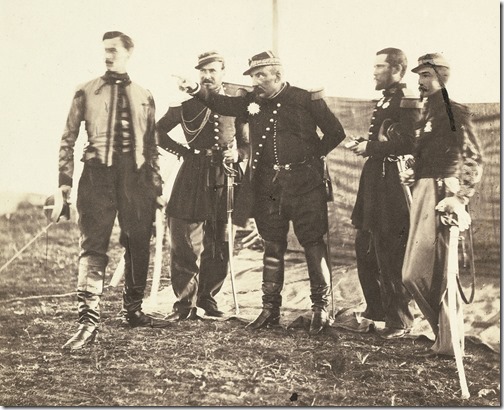To commemorate the end of WWII, China held a big military parade in Beijing. You can read about it in any number of news sites.
Beijing, though, (as well as Shanghai) is well known for having a serious problem with air pollution.
Here’s my experience: This is a late afternoon photo I took in Beijing in early October 2006… before the pollution was making the international news. Yes, that is the sun. There were days I could not see three blocks from my 6th floor apartment window.
In the run-up to the 2008 Olympics, Chinese officials were determined to present clear skies to the international audience. The same measures were taken again in the run-up to the APEC conference last year. And this article in The Guardian outlines some of the measures taken to present what cynical Beijingers are calling “Parade Blue” skies:
Four out of five government vehicles will be taken off the road between now and the parade and private vehicles will be allowed on the roads only on alternate days, based on odd- and even-numbered license plates.
Almost all steel mills in Beijing, Heibei and Tianjin are to be shut down in the lead up to the military parade, Xu Xiangchun, chief analyst at Mysteel Research told Bloomberg last month.
What all of this means is they know what causes the smog. This drill, which was first trialed when I was spending time there prior to the Olympics, is now routine.
OK, so what? And what does this have to do with lean thinking?
We can read these articles and shake our heads. But the story here is that many organizations drive the exact same behavior with their metrics driven cultures.
If making the numbers (or the sky) look good is all that matters, the numbers will look good. As my friend Skip puts it so well, this can be done in one of three ways:
- Distort the numbers.
- Distort the process.
- Change the process (to deliver better results).
The third option is a lot harder than the other two. But it is the only one that works in the long haul. The other two are doing what they did in Beijing – holding your breath.
I’ve seen this manifest in a number of ways. Factory managers doubling down producing product that wasn’t selling to “make absorption” and record paper profits for their plants.
A large corporation that needed good 4th quarter numbers.
- They shut down production in the last month of the fiscal year to get the inventory numbers up.
- They pulled orders in from 1st quarter to ship early. This booked revenue as soon as the inventory went into “shipped” status, even if it was still in a container at the port.
- Because they used LIFO inventory cost models, the deeper they dug into their finished goods, the lower the “costs” and the higher the “margins.” (Don’t confuse LIFO physical inventory management with LIFO cost accounting.)
And they put up some pretty good numbers. Here’s the kicker — they actually believed those numbers, confusing their manipulation of the financial models with actual results. Bonuses all around.
1st quarter, though, was a different story. Shortages resulting in missed shipments because they hadn’t made anything for a month. Thin orders because they had already filled all of the orders they had inventory to fill. (It isn’t like new orders magically appear to replace the ones you ship early.) And at the end of Q1, the CEO had to look the analysts in the eye and explain why.
Anyone can make the numbers for a quarter, maybe even for a year, just as Beijing can clean up their skies for a couple of weeks.
But if you want to make those numbers truthfully, then the only alternative is to “change underlying process.”
This is the difference between a “target” and a “target condition.” To most people a “target” is about the numbers, the desired value of whatever is being measured. That “target” can be achieved by any of the three methods: Distorting the numbers, distorting the process, or actually changing the process.
A target condition describes not only the goal, but how the process should operate to achieve it. The target condition is set by the improver / learner as a next landing point on the climb toward the overall challenge, but the coach hears it every iteration of the coaching cycle.
Thus the coach (who should be the boss) is well aware of which of the three approaches is being taken (hopefully “change the process”), as well as the issues and problems which must be overcome to get there. It is no longer just a matter of directing that a number be achieved and “holding people accountable” for hitting it.
This two-way conversation is what strengthens the organization and keeps things from becoming silly exercises that achieve nothing but encouraging people to hide the truth. (Then when someone decides to stop hiding it, we have a “whistleblower.”)
Epilogue: As I was working this up, the news has been pouring out about the VW “defeat device” scandal that has now taken out a number of corporate officers, and is going to seriously hurt the company for a long time.
Imagine this conversation in an engineering staff meeting:
Boss: What is the status on reaching the American clean air standards with the TDI engines?
Head Engineer: Don’t worry, we’ve finally got a plan. We are now certain we’ll be able to pass the test.
Boss: Great. Next item.
Contrast that with:
Boss: Where are we on the challenge of reaching the American clean air standards with the TDI engines?
Head Engineer: My current target condition is to pass the test by programming the car to detect when the test is being run, and adjust the engine performance to meet the standards while it is being tested. We’ll met the performance goals by shutting off the emissions controls during normal operation.
Now, that second conversation may well have occurred. But I can see the first case as far more likely.
The question for your organization is which of those conversations do you have? Or is the air too polluted to see clearly?





